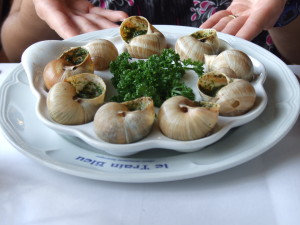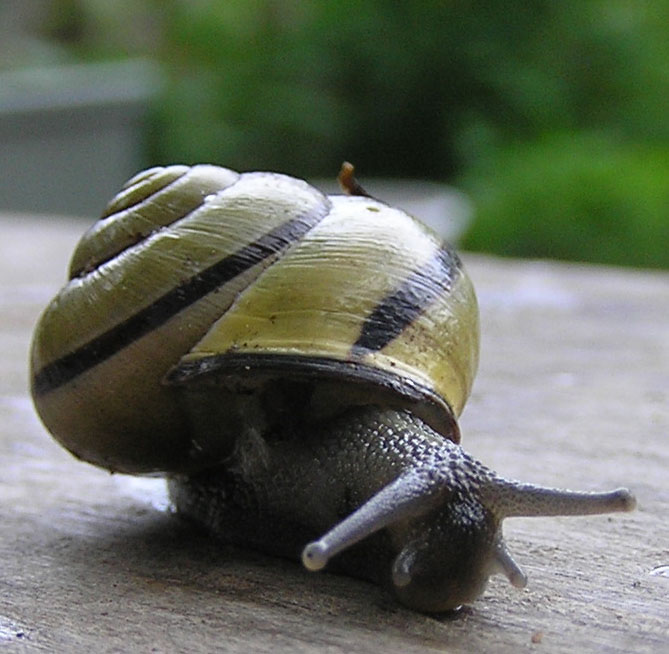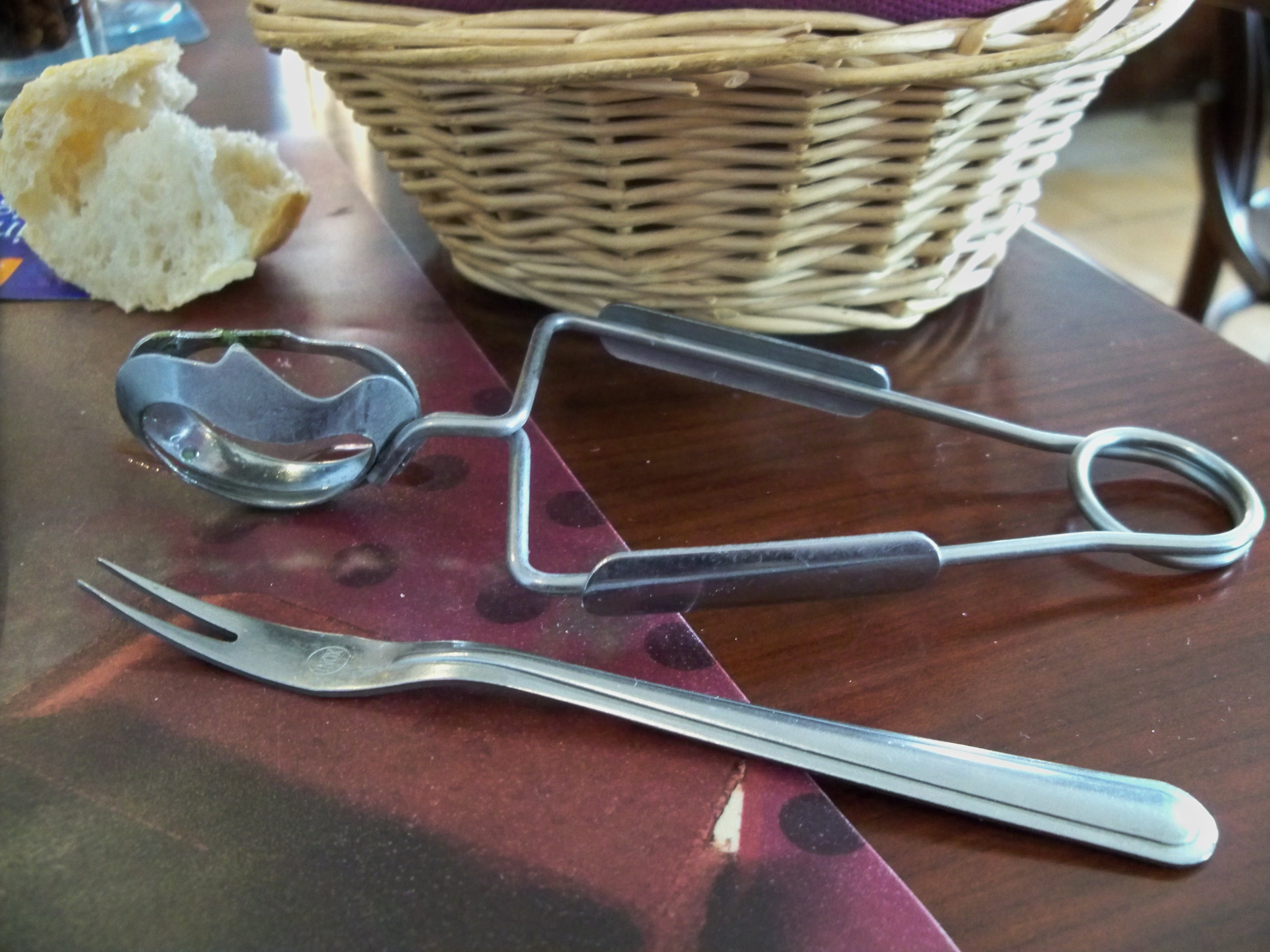Food for Thought: Escargot
Posted on November 19th, 2013 by Jonah Arellano in Uncategorized | No Comments »
Food is a very important part of any culture. When we celebrate, we eat. When we experience misfortune, others offer us food with their condolences. Most importantly—and most relevant to this blog post—when we travel, we crave the food of our own culture. We long for the food of our respective homes. Sometimes this can keep us from trying things that aren’t necessarily common in our own food culture, but this is a shame because some of the best food memories I have involve one of my younger siblings uttering, “ewww” beside me.
French food culture is diverse and can sometimes seem unappealing to those less adventurous diners among us. That’s why I decided to start this bi-weekly series to try and demystify dishes and ingredients that are common in French culture.
I thought for today’s post we could talk about that slimy French delicacy: escargot. I’ll tell you all about where they come from, how they’re prepared, and how to eat them without looking like an out of place foreigner.
When you say snails, do you mean garden snails?
Sort of. Not all species of snail are edible, but the species most commonly eaten, Helix Pomatia also known as the Roman snail, is an air breathing land snail. So yes, you could potentially find it in a garden, but I wouldn’t go around eating any snail you find inching along your vegetable garden. Snails that are eaten are either farmed or caught in the wild (doesn’t that make it sound like they might attack the person gathering them) and prepared for several days before they’re fit for consumption.
The snail cleanse
No, I’m not talking about some Hollywood fad diet. Before snails can be sent off to fancy restaurants to fulfill their delicious destiny, they first have to be purged for a few days while fasting or eating only corn meal. Hmm, I guess it sort of is a diet. Anyway, there’s no telling what a snail has eaten, and some of the things they may have snacked on, like a plant called foxglove, can be poisonous to humans.
After they’ve excreted everything they’ve eaten prior to capture, their ready to go. The most common preparation of escargot—which refers to the snails themselves, not a specific dish—calls for the snails to be:
·  Killed: usually by being tossed into boiling water.
Killed: usually by being tossed into boiling water.
Removed from their shells
Cooked: commonly with garlic and butter. Yum!
Put back into their shells
Served with garlic butter sauce
How can I avoid looking like Julia Roberts in Pretty Woman when I eat them?
We should all be so luck as to look like Julia Roberts in Pretty Woman. But if you’re referring to how inexperienced she seemed when eating the escargot, well, you’ve got a point. If you want to avoid looking like a foreigner when you dine on your snails, you might want to watch a few YouTube videos on how it’s done. I know it seems silly to watch a video one the proper way to eat something when you’ve been eating your whole life without incident, but this is an appetizer that requires specialty tools. Just do yourself a favor and watch how it’s done. Here are the finer points:
- Hold the snail in a napkin covered hand or with metal tongs if they are provided.
- With the tiny two-pronged snail fork in your other hand gently try to pry the snail out with a twisting and pulling motion. Be sure to twist the fork in your direction, you don’t want to accidentally fling it across the table at someone.
- Once the escargot has been gently removed from its hiding spot, you may dip it in the butter and consume.
I haven’t had snails in this kind of application, but I have had them in a seafood cocktail, and they were really good despite the cries of “ewww” coming from my sister-in-law. If you don’t fill your head with all the reasons why you might not like them, you’ll be able to judge without prejudice whether or not you do.
Do you consider yourself a picky eater, or are you brave with your food choices? Would you ever try escargot?







